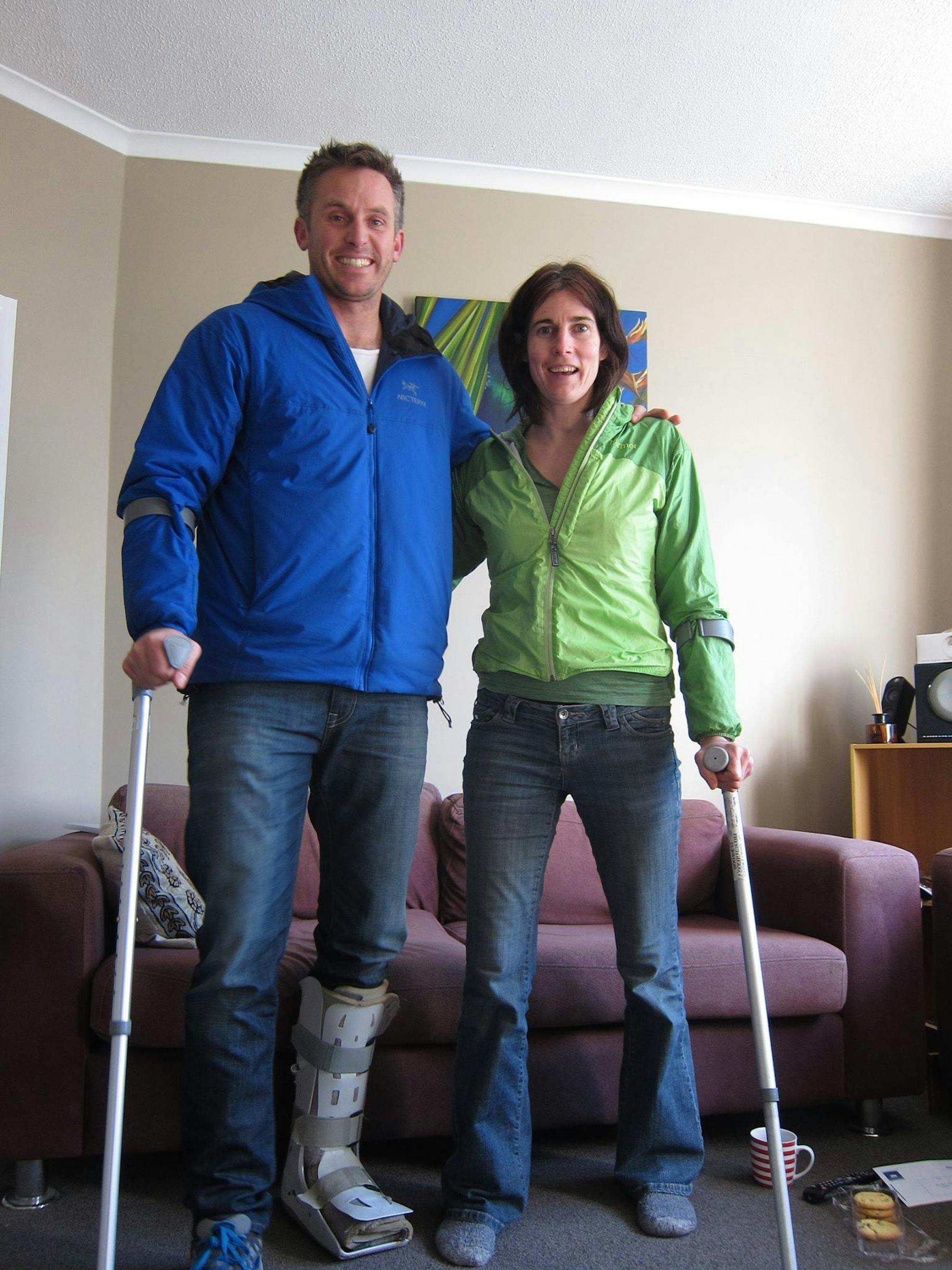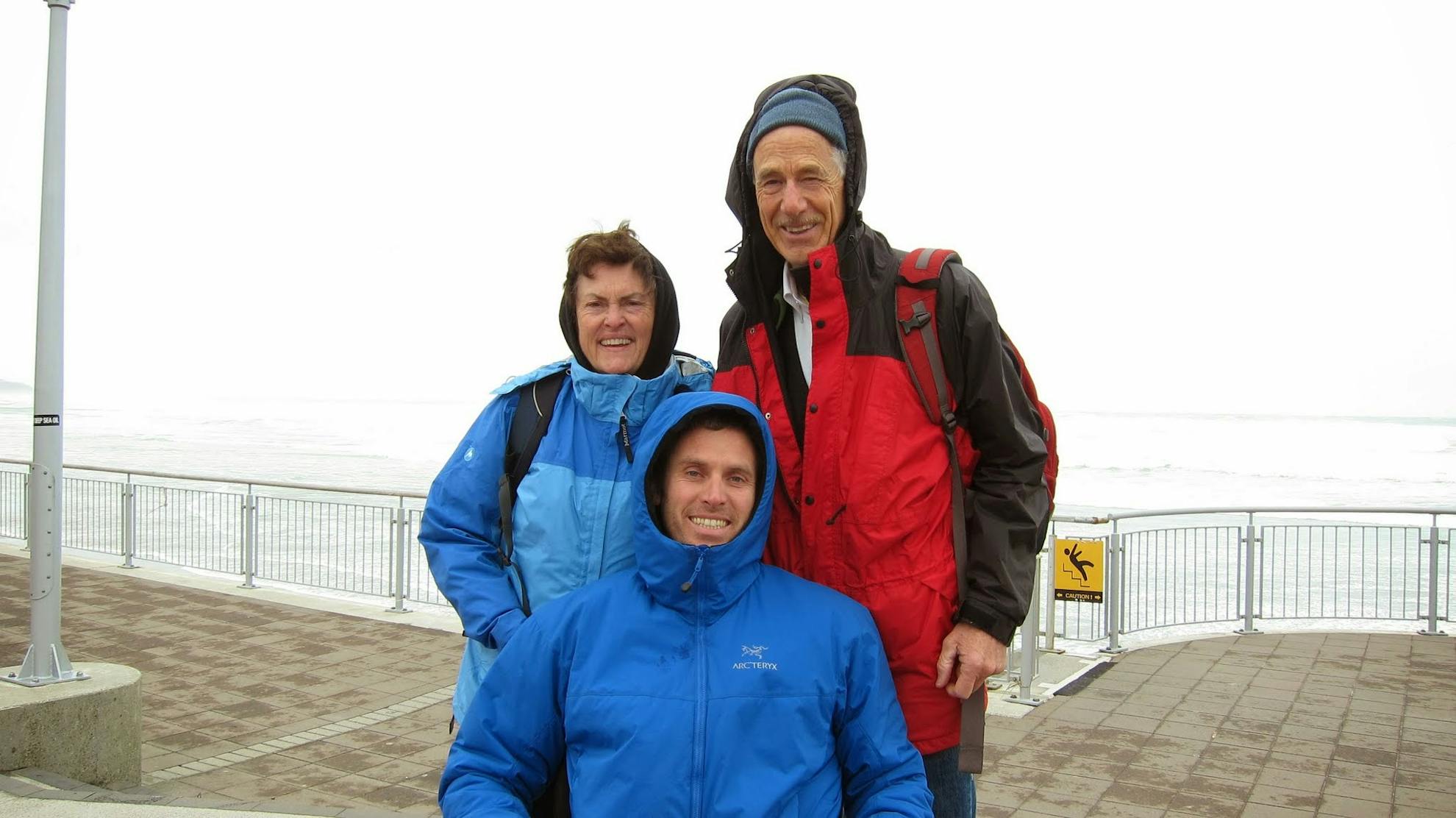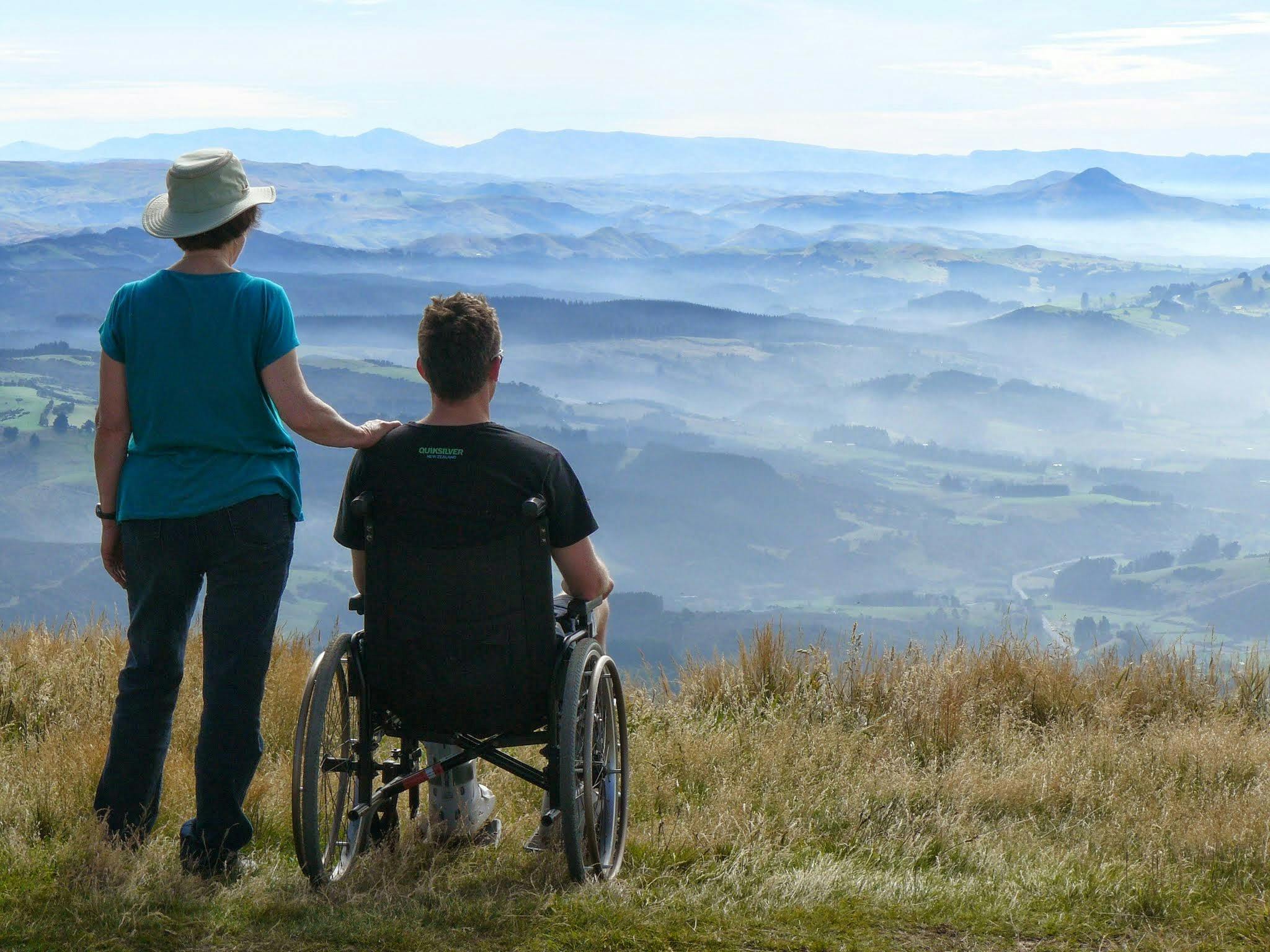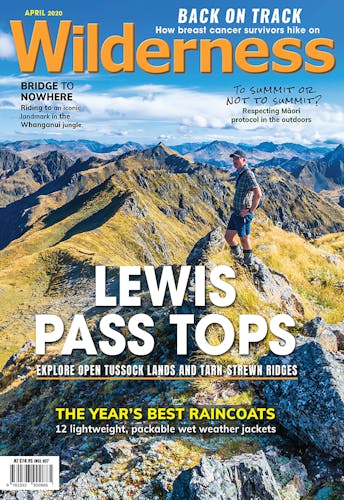There’s more to injury recovery than mending bones. Matthew Cattin talks to two climbers about the internal struggles of getting back on track
Matt Stewart couldn’t believe he’d fallen five storeys.
It’s not that he couldn’t remember the fall – the plunging realisation he’d clipped onto the wrong line and the unbearable pain he met at the bottom are still imprinted upon his memory.
It’s just that 18m seemed impossibly high.
The Queenstown climber was adamant exaggeration was at play, and from his hospital bed he downplayed the height to anyone listening. Yet his climbing mate insisted – 18m of freefall. But how does anybody survive that?
A touch to the left or right, and he likely wouldn’t have. Admittedly unlucky to fall at all, Stewart’s luck extended just enough to see him land on the grassy bank between two boulders – just half a metre in either direction would have escalated the Hospital Flat rescue operation into a body retrieval.
Memories of the aftermath are fuzzy. Eyes clenched with pain, Stewart remembers the sounds of his rescue more than the sights; the thudding helicopter and the voices of climbers who tended to him.
As he was airlifted to hospital, he remembers how bright the chopper interior looked before he was put under – “like the Hollywood depiction of going off to heaven”.
Stewart came around in hospital to a horror list of injuries including three broken vertebrae, a fractured ankle in his left foot, and a right heel shattered into a 15-piece jigsaw puzzle. It took 12 pins, criss-crossed like pick-up-sticks on the x-ray, to put it back together.

His prognosis for physical recovery was long, difficult, and unlikely to see him enjoy the outdoors as he once had.
“Early on, the surgeon said I probably wouldn’t run again, and if I did, I wouldn’t enjoy it,” Stewart says.
It was a tough prognosis for the active 33-year-old, who had moved to New Zealand from the US to immerse himself in mountaineering. A positive attitude was essential from day one.
“It’s so easy to focus on how much it sucks that a disaster has happened,” Stewart says.
“You can sit in the hospital bed and blame this or that, but the reality is, you’re there in the hospital bed and that’s a fact, you’re there – what are you going to do now?”
Stewart’s parents flew over from California to care for him, and his now-wife Angela – who lived in Christchurch at the time – became a regular visitor.
Other friendships, however, began to lose traction.
Unable to participate in the outdoors as he previously had, Stewart found fewer social invitations coming his way.
Believing that his sporty friends wouldn’t enjoy hanging out with him as much indoors, Stewart was also to blame for his withdrawal.
“Sport was a big part of my identity, and so many friendships I had were based on sporting activities,” he says. “When something like [my accident] happens, all of a sudden that side of your life is gone.
“I would have been guilty of it pre-injury too – when a mate gets injured, it can be easy to forget about them and not realise what they’re going through.”
Stewart was released from hospital after 25 days, and he spent his first few months of recovery receiving regular physical therapy and going to the gym every day.
Around four months after the accident, while still on crutches, Stewart’s occupational therapist suggested he may be experiencing situational depression and he began seeing a psychologist.
It was his first time seeking professional help, and he found it helpful to his emotional wellbeing.
Registered psychologist Alexis Kliem says physical recovery is challenging mentally and emotionally, as it interrupts routine.
“It has an impact on activities and work, and both of those things can have meaning and provide a sense of purpose, so it’s a huge shock to the system which takes time to adjust to,” she says.
“Recovery is a tricky word because you might not recover to how you were before the accident.
“I try to help people to figure out how to adjust to what has happened, which is often around helping people find a new sense of meaning, a purpose or accomplishment in their lives – if they can’t do climbing anymore, what might that look like?”

Kliem says it’s not uncommon for injured people to retreat, or feel like a burden to those around them.
“It’s easy to get caught in a self-perpetuating loop where people think they are a burden so they withdraw. This can then leave more time to feel low and think even more negative thoughts, which can contribute to ongoing disengagement from enjoyable activities,” she says. “Tools or strategies we use look at getting people to do actions which bring them into the present – out of their own head and thoughts.”
Although never diagnosed, Stewart says he also experienced symptoms of PTSD after his accident.
“I didn’t have flashbacks, but it took a while to feel safe watching somebody else climb,” he says.
“When climbers got close to the anchor, I would get really scared and didn’t feel comfortable – I felt they were going to fall.”
Over time, the anxiety subsided and five years after his fall, he returned to climb the route that nearly killed him – his biggest discomfort came from his sensitive feet.
He’s since moved away from the sport, and mountain biking has become a bigger part of Stewart’s life.
He no longer feels the need for adrenalin, and though the accident brought about the end of some physical activities, it also opened new doors.
Last year, Stewart married Angela, whom he reconnected with from his hospital bed, and their son Jameson was named after another of Stewart’s visitors, Mike Jameson, who would regularly deliver fresh fruit, flowers, pastries and positivity.
“The whole thing – although unfortunate – has been a real journey and there has been a lot of positives,” he says. “I’ve grown a lot as a person, and it’s taken me to the next step of responsibility.”
Just a few months before Stewart’s injury, he’d been shocked to hear of the injuries sustained by a friend of his – Heather Rhodes – who had fallen while climbing in the Arrowsmith Range.
The outdoors instructor was abseiling down a couloir in late 2013 when her anchor failed, causing her to fall 300m.
Her two companions thought she was dead, and down-climbed to find her tangled in rope, breathing but unresponsive. Rhodes suffered two broken legs – including compound fractures of her right tibia and fibula – three broken vertebrae and serious head injuries.
She spent eight days in a coma, and has no memories from the day leading up to the fall to five weeks after, but she does remember thinking recovery would be swift.
“When I was discharged from hospital in mid-January, I was totally thinking that by the end of winter I would be back to climbing, but holy sh*t, I wasn’t even off crutches by then – what was I thinking?” she says.
To move forward, Rhodes had to make peace with her progress.
“I’m not sure if there is a word in English, but it’s a funny combination of remaining hopeful about what you will be able to achieve or do, while at the same time accepting where you’re at,” she says.
“What the Western medical world is just beginning to have a handle on is the interaction between mind and body – if you fully expect to get back, that’s going to be improving your healing.”
Like Stewart, Rhodes experienced a withdrawal from friendship circles, although, in hindsight, she feels it may have been largely self-imposed.
When her legs recovered enough to allow her to get back into light tramping, she frequently went out on her own.
“I assumed because I was doing trips I normally wouldn’t have bothered to do, that no one else would be into it,” she says. “In retrospect, I could have been a bit more onto it, and spent more time tramping with friends with kids – looking at the good side of being injured, it gives you the chance to experience things you wouldn’t do otherwise.”
Rhodes eventually returned to climbing and her first climb after the accident was at Paines Ford in Takaka.
“When I was abseiling I did wonder if it would all come flooding back to me, but it didn’t, which probably made it easier to get back into things,” she said.
However, several years later, during an abseil descent with traditional anchors, Rhodes wasn’t altogether comfortable and her confidence wasn’t where it had been pre-accident.
“It wasn’t a memory thing – it was just that the last time I abseiled in the mountains went really badly for me, and I didn’t want to do that to my parents and family again,” she says.
Rhodes says finding an appropriate physiotherapist who knows what you want to achieve makes a huge impact on recovery.
She also encourages getting outside and enjoying recovery therapy, and incorporating hobbies into recuperative exercise if possible.
“Doing the stuff you like to do and walking around is still a kind of physiotherapy. Mountain biking is good for my brain – until I fall off and hit my head – and walking around with a heavy pack is helping my balance,” she says.
Another key point, she adds, is to be kind to yourself.
“I could be climbing more than I do, mountaineering more and kayaking more… I’m not sure about running more as that’s where I have the most limitations, but the best thing I can be doing is cutting myself some slack for my relative lack of outdoor adventures,” Rhodes says.
“I’m studying at medical school, and there is only so much time in the day – I also want to be a decent daughter and a decent friend.”
Knowing how to get help
When a friend or family member is recovering from injury, it can be difficult to know what to say or how to behave.
Psychologist Alexis Kliem recommends listening and being supportive, without making comments like “you’re lucky to be alive”, or “you shouldn’t be feeling like that”.
“It can be really tough when people say well-meaning stuff like ‘you were so lucky’, as it feels invalidating of the person’s experience of right now, where they are really struggling, recovering physically and psychologically,” Kliem says.
Offering support, company and time is a way of helping, without being overbearing or stressing the recovering person.
“If you offer things, a person can take your offer up or not. Often when we’re feeling down, we don’t feel motivated or have energy to do things, but that doesn’t mean we don’t want to,” Kliem says.
“Even if they say no, it doesn’t mean stop offering support – it’s not about forcing them to do things, but being there for them.”








